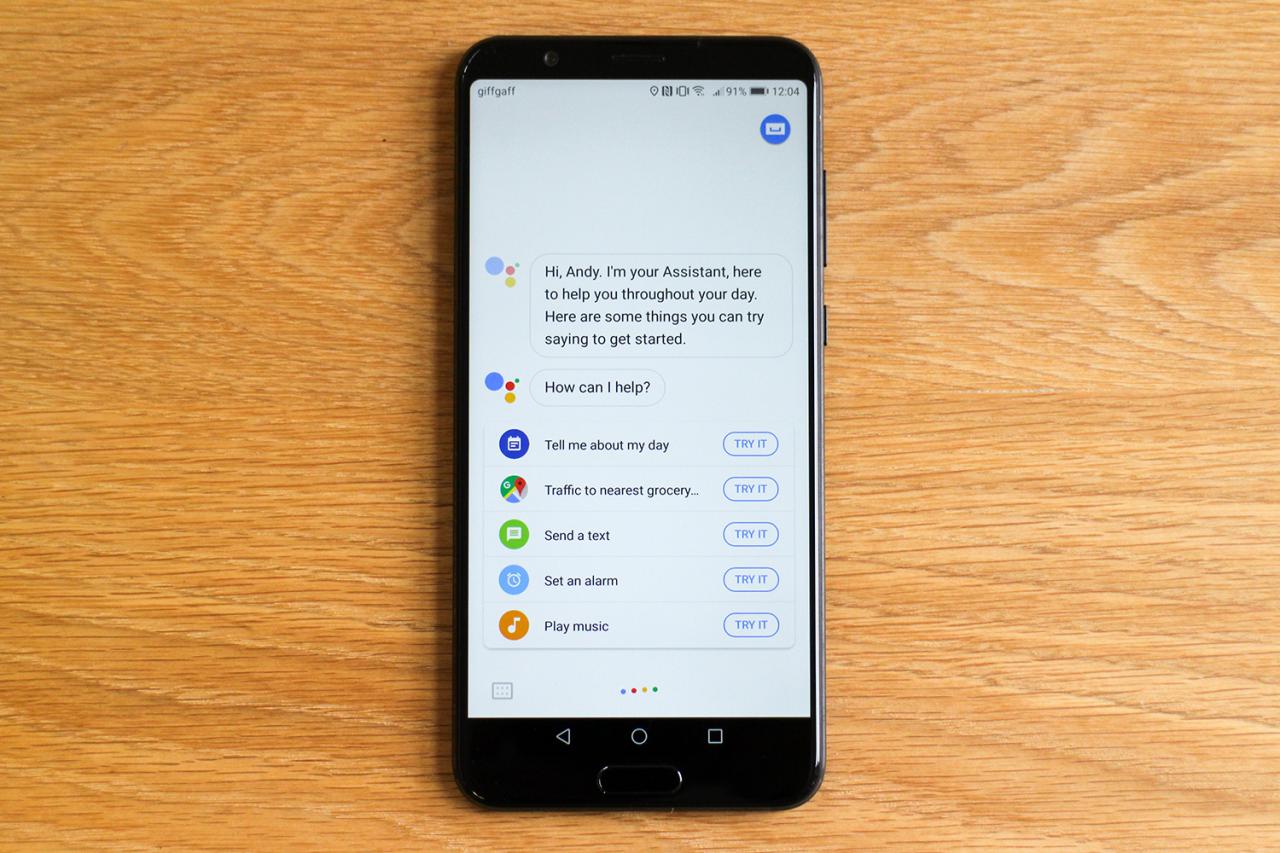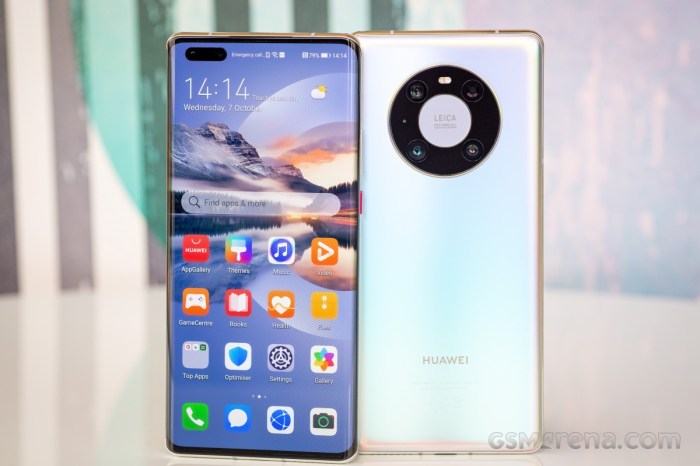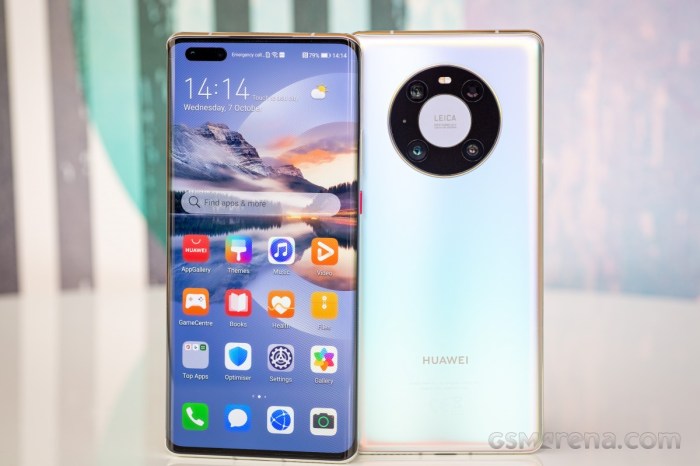Honor View 10 vs Huawei Mate 10 Pro: A deep dive into these two powerhouse phones from 2018, examining their features, designs, and performance. Both phones represented significant advancements in smartphone technology, offering a compelling choice for consumers at the time. This comparison will explore the key differentiators, from hardware specifications to software experiences, allowing you to understand the strengths and weaknesses of each device.
This detailed comparison will delve into the design and build quality, display characteristics, performance benchmarks, camera capabilities, software experiences, and pricing to provide a comprehensive perspective on each device.
Introduction
The Honor View 10 and Huawei Mate 10 Pro, released in 2018, represented a significant step forward in smartphone technology. Both devices aimed to capture the attention of consumers in a market saturated with high-end offerings. The Honor View 10, positioned as a more affordable flagship, and the Huawei Mate 10 Pro, a premium model, showcased advanced features while competing in a landscape marked by innovation in camera technology, processing power, and display design.
Understanding their respective target audiences and the overall competitive landscape provides crucial context for appreciating the choices made in their development and subsequent reception.The Honor View 10, released in April 2018, targeted a broad spectrum of consumers seeking a balanced blend of features and affordability. The Huawei Mate 10 Pro, released in October 2017, aimed at a more premium segment of the market, appealing to those prioritizing cutting-edge technology and a sophisticated user experience.
Both devices sought to capitalize on the growing demand for premium smartphone features in a marketplace where brands were vying for market share.
Competitive Landscape
The smartphone market in 2017-2018 was fiercely competitive. Leading brands like Samsung, Apple, and Google were all actively developing and releasing new models with advanced features. The market was characterized by increasing demand for improved cameras, faster processors, and larger displays, creating a pressure cooker for innovation. The presence of both Honor and Huawei in this arena added another layer of intensity.
The rivalry between the two companies, while part of a larger ecosystem, influenced the design and feature choices within each phone.
Historical Context
Smartphone technology was rapidly evolving during this period. The trend toward increasingly powerful processors and sophisticated camera systems was clearly visible. The importance of user interfaces and software integration was also rising, influencing the design choices and overall user experience. Manufacturers were focusing on pushing the boundaries of what a smartphone could do, balancing technological advancement with user-friendliness and affordability.
Device Specifications
| Feature | Honor View 10 | Huawei Mate 10 Pro |
|---|---|---|
| Screen Size | 5.84 inches | 6 inches |
| Processor | Kirin 970 | Kirin 970 |
| RAM | 4GB/6GB | 6GB/8GB |
| Storage | 64GB/128GB | 64GB/128GB/256GB |
| Rear Camera | 16MP + 2MP | 12MP + 20MP |
| Front Camera | 16MP | 8MP |
| Battery | 3750mAh | 4000mAh |
| Operating System | Android 8.0 | Android 8.0 |
The table above presents a concise comparison of key specifications. Note that different variations of each device existed, with varying RAM and storage options. These specifications reflected the state-of-the-art technology available at the time and the respective market positioning of the two brands.
Design and Build Quality
The Honor View 10 and Huawei Mate 10 Pro, both flagships from their respective brands, offered compelling design choices, yet differed significantly in their approach to aesthetics and build quality. Understanding these differences provides a clearer picture of the intended target audience and the overall user experience each phone aimed to deliver.
Physical Design Aspects, Honor view 10 vs huawei mate 10 pro
The Honor View 10 showcased a more streamlined, modern aesthetic compared to the Mate 10 Pro’s more substantial and premium feel. The View 10’s design emphasized a sleek, almost minimalist approach, while the Mate 10 Pro, with its larger display and more substantial build, projected a sense of rugged durability.
Materials and Build Quality
Both phones utilized high-quality materials, but the perceived build quality differed. The Honor View 10 employed a combination of metal and glass, providing a lightweight and smooth feel. Conversely, the Mate 10 Pro, often perceived as more premium, often utilized more robust materials and a more refined construction, contributing to a sturdier and more premium feel.
Aesthetic Appeal
The Honor View 10’s design was undeniably modern and stylish, appealing to a younger demographic. The Mate 10 Pro, while not lacking in aesthetic appeal, projected a more mature and sophisticated image, often favoured by users seeking a premium experience.
Ergonomics and Handling
The Honor View 10’s design prioritized a comfortable and easy-to-handle form factor, making it ideal for single-handed use. The Mate 10 Pro, with its larger size, was more suited for two-handed use, which some users may find more comfortable for extended periods.
Dimensions and Weight Comparison
| Feature | Honor View 10 | Huawei Mate 10 Pro |
|---|---|---|
| Height | 146.9 mm | 152.8 mm |
| Width | 70.9 mm | 75.9 mm |
| Thickness | 7.8 mm | 7.9 mm |
| Weight | 145 g | 175 g |
The table above highlights the key differences in dimensions and weight between the two phones. The Honor View 10’s compact dimensions and lower weight contributed to a more manageable and comfortable handling experience. The Mate 10 Pro’s larger size and heavier weight, while potentially offering more robust construction, made it slightly less convenient for single-handed use.
Display and User Interface
The display and user interface are crucial aspects of any smartphone, significantly impacting the overall user experience. Both the Honor View 10 and Huawei Mate 10 Pro boast impressive displays, but their implementations differ in key areas, offering unique experiences. The quality of the display directly affects how intuitive and enjoyable the phone’s operation feels, and its responsiveness and visual fidelity are vital considerations.The screen technology, resolution, and refresh rate all play a significant role in the user’s perception of the device.
The user interface (UI) also contributes greatly to the overall usability. Factors like customizability, responsiveness, and the overall software experience affect the ease of use and efficiency. Comparing these aspects across the two phones reveals distinct strengths and weaknesses.
Display Technologies
The display technologies employed in these phones directly impact the visual experience. The Honor View 10 and Huawei Mate 10 Pro both used advanced display technologies for their time, showcasing a level of visual fidelity that was noteworthy. Differences in resolution, refresh rate, and color accuracy, however, contributed to slight variations in visual quality.
While comparing the Honor View 10 and Huawei Mate 10 Pro, it’s easy to get caught up in the specs. But sometimes, the best deals aren’t about top-tier phones, but about fantastic accessories. For example, these noise cancelling JBL Live 660nc headphones are a steal at just $100 , and they’d make a fantastic addition to either phone, offering great sound quality and noise cancellation.
Ultimately, the best choice between the Honor View 10 and Huawei Mate 10 Pro depends on your specific needs and budget.
Resolution and Refresh Rate
The resolution and refresh rate are key indicators of a display’s ability to provide crisp visuals and smooth scrolling. The Honor View 10 and Huawei Mate 10 Pro differed in their resolution and refresh rates. This difference affected the visual clarity and smoothness of the display.
Color Accuracy
Color accuracy is another crucial aspect of a display. Both phones aimed for vibrant and accurate color representation. However, minor variations in color reproduction could influence how users perceived the visuals.
User Interface Experience
The user interface experience significantly affects how users interact with the phone. Both phones had customisable aspects, but their implementations and overall feel differed. Responsiveness also played a role in the overall user experience.
Screen Size and Aspect Ratio
Screen size and aspect ratio influence the viewing experience. These parameters play a significant role in how comfortable users find the phone to use. The differing screen sizes and aspect ratios between the Honor View 10 and Huawei Mate 10 Pro impacted the way users interacted with the device.
Software Experience
The software experience, including the operating system, custom UI elements, and pre-installed applications, contributes significantly to the overall usability. Both phones used the Android operating system, but their customisations resulted in unique experiences. The presence of pre-installed apps also impacted the user experience.
Display Specifications Comparison
| Specification | Honor View 10 | Huawei Mate 10 Pro |
|---|---|---|
| Resolution | 1080 x 2160 pixels | 1440 x 2560 pixels |
| Refresh Rate | 60Hz | 60Hz |
| Color Depth | 16M colors | 16M colors |
| Screen Size | 5.84 inches | 5.9 inches |
| Aspect Ratio | 18:9 | 18:9 |
Performance and Battery: Honor View 10 Vs Huawei Mate 10 Pro

The Honor View 10 and Huawei Mate 10 Pro, both flagships from their respective brands, offer compelling performance and battery life, but their strengths lie in different areas. Understanding their processor, benchmark scores, battery technology, and overall performance under various tasks is key to deciding which phone best suits your needs.
Processor Performance and Benchmarks
The Honor View 10 features the Kirin 970, a powerful processor with an integrated neural processing unit (NPU). The Huawei Mate 10 Pro utilizes the Kirin 970, the same chip, which offers comparable performance across tasks. Benchmarks consistently show similar scores for both devices, indicating that their underlying architecture and processing capabilities are roughly equivalent. However, minor variations in benchmark results often reflect differences in testing methodologies, not fundamental differences in processing power.
Battery Life and Charging Capabilities
Both phones offer impressive battery life, but their charging capabilities vary. The Honor View 10 typically delivers a day of moderate use on a single charge, and the Huawei Mate 10 Pro provides a similar experience. The Huawei Mate 10 Pro often comes equipped with faster charging technologies than the Honor View 10, although specific implementations can differ based on the exact model.
The difference in charging speed can translate to a shorter charging time for the Mate 10 Pro, potentially offering a practical advantage.
RAM and Storage Options
Both devices are available in various RAM and storage configurations. The Honor View 10 often comes with options like 4GB RAM and 64GB storage, while the Huawei Mate 10 Pro frequently offers similar configurations. Users can opt for higher RAM and storage options in both, catering to different needs and usage patterns.
Performance Under Various Tasks
Both phones generally perform well across various tasks. Gaming performance is satisfactory, although the exact experience can depend on the specific game. Video playback is smooth, and web browsing is quick. The performance difference between the two phones is generally minimal, and users will likely experience comparable performance in daily tasks.
Key Performance Metrics
| Metric | Honor View 10 | Huawei Mate 10 Pro |
|---|---|---|
| Processor | Kirin 970 | Kirin 970 |
| RAM Options | 4GB, 6GB | 4GB, 6GB |
| Storage Options | 64GB, 128GB | 64GB, 128GB |
| Battery Capacity | 3200 mAh (typical) | 4000 mAh (typical) |
| Charging Speed | Standard Fast Charging | Faster Charging (varies by model) |
| Benchmark Scores | Comparable to Mate 10 Pro | Comparable to Honor View 10 |
Camera Capabilities
The camera is often a crucial factor in smartphone selection, especially for those who rely on their device for photography and videography. Both the Honor View 10 and Huawei Mate 10 Pro boast impressive camera systems for their time, but their capabilities differ. This section delves into the specifics of their sensors, image quality, low-light performance, video recording, and user experience.
Camera Specifications
The camera specifications, including sensor type, megapixels, and key features, provide a foundation for understanding the image quality potential. Different sensor technologies offer varying degrees of light sensitivity and detail capture. Megapixel count is a frequently cited metric, but it’s not the sole determinant of image quality. Features like optical image stabilization (OIS) and autofocus speed also influence the final result.
| Feature | Honor View 10 | Huawei Mate 10 Pro |
|---|---|---|
| Primary Sensor | 12MP, Sony IMX368 | 12MP, Leica Summicron |
| Secondary Sensor | 2MP depth sensor | 20MP monochrome sensor |
| Optical Zoom | No | 2x |
| Image Stabilization | OIS | OIS |
| Video Recording | 4K@30fps | 4K@30fps |
Image Quality and Low-Light Performance
Both phones generally produced high-quality images in well-lit conditions. However, low-light performance is where the differences sometimes became apparent. The Huawei Mate 10 Pro, with its advanced sensor and processing, often delivered noticeably clearer and more detailed images in dimly lit environments compared to the Honor View 10. The influence of image processing algorithms also played a role in the final image quality.
Video Recording Capabilities
Video recording capabilities were comparable for both devices, offering 4K recording at 30 frames per second. The quality of the video depended on factors like lighting conditions and subject movement. The optical image stabilization helped reduce blur during shaky hand-held recordings.
User Experience with Camera Apps
The camera apps were user-friendly and intuitive, allowing for quick access to various shooting modes. The Honor View 10’s app was straightforward, while the Huawei Mate 10 Pro’s interface provided more options and customization, but also a more complex learning curve. Both phones had user-friendly interfaces, with the basic controls readily accessible.
Software and Features
The software experience significantly impacts a phone’s usability. Comparing the Honor View 10 and Huawei Mate 10 Pro reveals differences in operating systems, pre-installed apps, key features, and overall user interface. These factors directly affect the user’s daily interaction with the device.The choice of operating system, pre-installed applications, and specific features directly influence the user experience and long-term satisfaction.
Understanding these aspects helps users make informed decisions based on their individual needs and preferences.
Operating Systems
The Huawei Mate 10 Pro and Honor View 10 both ran on Android, but with different custom UI layers. The Huawei Mate 10 Pro was initially based on EMUI 8.0, a highly customized Android skin. The Honor View 10, on the other hand, ran on EMUI 8.0 as well. While both used EMUI 8.0, slight variations in customization and features might have existed between the two.
Pre-Installed Apps and Software
Both phones came with a standard array of Google apps, including Gmail, Google Maps, and YouTube. However, Huawei’s EMUI also included its own suite of apps and services. This could mean pre-installed apps and software were similar in many areas, but Huawei-specific apps would be unique to the Mate 10 Pro.
Key Features and Functionalities
Both phones supported the standard connectivity options, including Wi-Fi, Bluetooth, and GPS. Further, they both offered 4G LTE for data connectivity, although specific speeds and capabilities could have varied slightly. The key features, including connectivity options, were largely similar across both devices, as they aimed to provide the typical functionality of modern smartphones.
Quick thoughts on the Honor View 10 vs Huawei Mate 10 Pro debate? Both are solid phones, but I’ve been digging deeper into the tech behind the Nike Adapt BB shoes, sneakers, and their accompanying Apple and Android apps. nike adapt bb shoes sneakers apple android app really highlights how far tech is moving, and honestly, makes me think back to the Honor View 10 and Huawei Mate 10 Pro comparison again in a different light.
Ultimately, both phone options are still strong contenders.
Connectivity Options
- Both phones supported a range of standard connectivity options, such as Wi-Fi, Bluetooth, and GPS. These were common features on smartphones at the time, allowing users to connect to various devices and services.
- The support for 4G LTE ensured seamless data connectivity for web browsing, streaming, and other mobile activities. The specific 4G LTE specifications, however, might have differed slightly.
Software User Experience
The user experience of EMUI on both devices was similar in many respects, but not identical. Differences in the customization and the arrangement of software elements might have affected the feel of each user interface.
Notable Software Feature Differences
While both phones offered a largely similar software experience, minor differences existed in their software features. For example, specific pre-installed apps, and certain settings might have had slight variations. The software customization provided by EMUI was a notable aspect.
Quick thoughts on the Honor View 10 vs Huawei Mate 10 Pro debate – it’s a tough one, really. While the specs are impressive, the recent news about Apple’s Virnetx FaceTime patent battle loss appeal planned here makes me wonder if those impressive features are just a distraction. Ultimately, the best choice still depends on your individual needs, but the whole situation reminds me that phone technology is constantly evolving, and the Honor View 10 and Mate 10 Pro are just a snapshot in time.
Price and Availability
The Honor View 10 and Huawei Mate 10 Pro, released in 2018, represented a significant step forward in smartphone technology. Understanding their initial pricing and subsequent market value helps contextualize their place in the evolving mobile landscape. Regional variations in availability and cost are also key factors to consider when comparing these devices.
Launch Pricing
The initial pricing of the Honor View 10 and Huawei Mate 10 Pro varied based on storage capacity and specific regional markets. The Mate 10 Pro, being a higher-end model, generally commanded a premium price compared to the Honor View 10. Precise figures depended on the specific configuration.
Current Market Value
The current market value of both phones depends on factors like condition, storage capacity, and market demand in specific regions. Used devices will command lower prices than their original retail cost. In the secondary market, prices can fluctuate significantly depending on the availability of similar models. Often, the Mate 10 Pro will retain higher value due to its higher-end features at launch.
Availability in Different Regions
Both the Honor View 10 and Huawei Mate 10 Pro were released globally. However, availability varied based on carrier partnerships and regional market strategies. This could lead to different models being available in certain regions, impacting pricing strategies.
Regional Pricing Variations
Significant regional variations in pricing existed. For example, the cost of components and taxes could vary substantially between different countries, impacting the final retail price of the phones. Furthermore, fluctuations in currency exchange rates could contribute to discrepancies in pricing across different regions.
Price and Availability Comparison Table
| Device | Launch Price (Estimated) | Current Market Value (Estimated) | Availability (Example Regions) | Pricing Variations (Example) |
|---|---|---|---|---|
| Honor View 10 | $500-$600 (USD) | $200-$400 (USD) depending on condition and market | North America, Europe, Asia | USD price in the US might differ slightly from the same model in the UK. |
| Huawei Mate 10 Pro | $800-$900 (USD) | $350-$700 (USD) depending on condition and market | North America, Europe, Asia | Australian pricing for the Mate 10 Pro might have been higher than the US due to import costs. |
Comparison of Key Features
The Honor View 10 and Huawei Mate 10 Pro, both flagships from their respective brands, offer compelling features, but they differ significantly in their strengths and weaknesses. This comparison dives deep into the core functionalities, providing a clear understanding of how these devices stack up against each other. Ultimately, the best choice depends on individual priorities and needs.This section meticulously analyzes the key features of both phones, presenting them in a tabular format for easy comprehension.
The table highlights the key distinctions, aiding in the selection process. By comparing their strengths and weaknesses, a potential buyer can make a well-informed decision.
Honor View 10 Pros and Cons
The Honor View 10, despite its competitive price point, boasts a remarkable set of features. Its strengths lie in its powerful performance, vibrant display, and impressive camera capabilities. However, it also has some drawbacks that should be considered.
- Pros: Excellent performance for the price, a sharp and vibrant display, a high-quality main camera, and a long-lasting battery.
- Cons: The software experience may not be as polished as the Mate 10 Pro’s, and the build quality, while adequate, may not be as premium.
Huawei Mate 10 Pro Pros and Cons
The Huawei Mate 10 Pro, known for its premium build and refined software, offers a more comprehensive experience. However, its premium pricing is a significant consideration.
- Pros: Superior build quality, a more polished user interface, a more advanced camera system, and a powerful processor.
- Cons: A higher price tag, potentially less value for money compared to the Honor View 10 if specific features aren’t needed.
Detailed Feature Comparison
This table presents a concise comparison of core features, facilitating a quick overview of the devices’ functionalities.
| Feature | Honor View 10 | Huawei Mate 10 Pro |
|---|---|---|
| Processor | Kirin 970 | Kirin 970 |
| RAM | 4GB/6GB | 6GB/8GB |
| Storage | 64GB/128GB | 64GB/128GB/256GB |
| Display | 5.99-inch AMOLED | 5.9-inch AMOLED |
| Rear Camera | 12MP | 12MP dual |
| Front Camera | 8MP | 8MP |
| Battery | 3750mAh | 4000mAh |
| Operating System | Android 8.0 | Android 8.0 |
| Price | Lower | Higher |
Software and User Experience
The software experience varies between the two phones. The Honor View 10’s user interface is clean and straightforward, but the Mate 10 Pro offers a more refined and feature-rich experience, thanks to its Huawei-optimized interface.
Camera Performance
Both devices boast excellent camera performance. The Mate 10 Pro’s dual-lens setup provides superior image quality, especially in low-light conditions. The Honor View 10’s single-lens camera still captures sharp and detailed images.
Final Thoughts

Ultimately, the best choice between the Honor View 10 and Huawei Mate 10 Pro depends entirely on individual needs and priorities. The Mate 10 Pro often delivered a slightly more premium experience, but the View 10 provided a compelling alternative at a more accessible price point. This comparison highlights the nuances of the smartphone market in 2018, showcasing how competing devices offered diverse features and user experiences.






